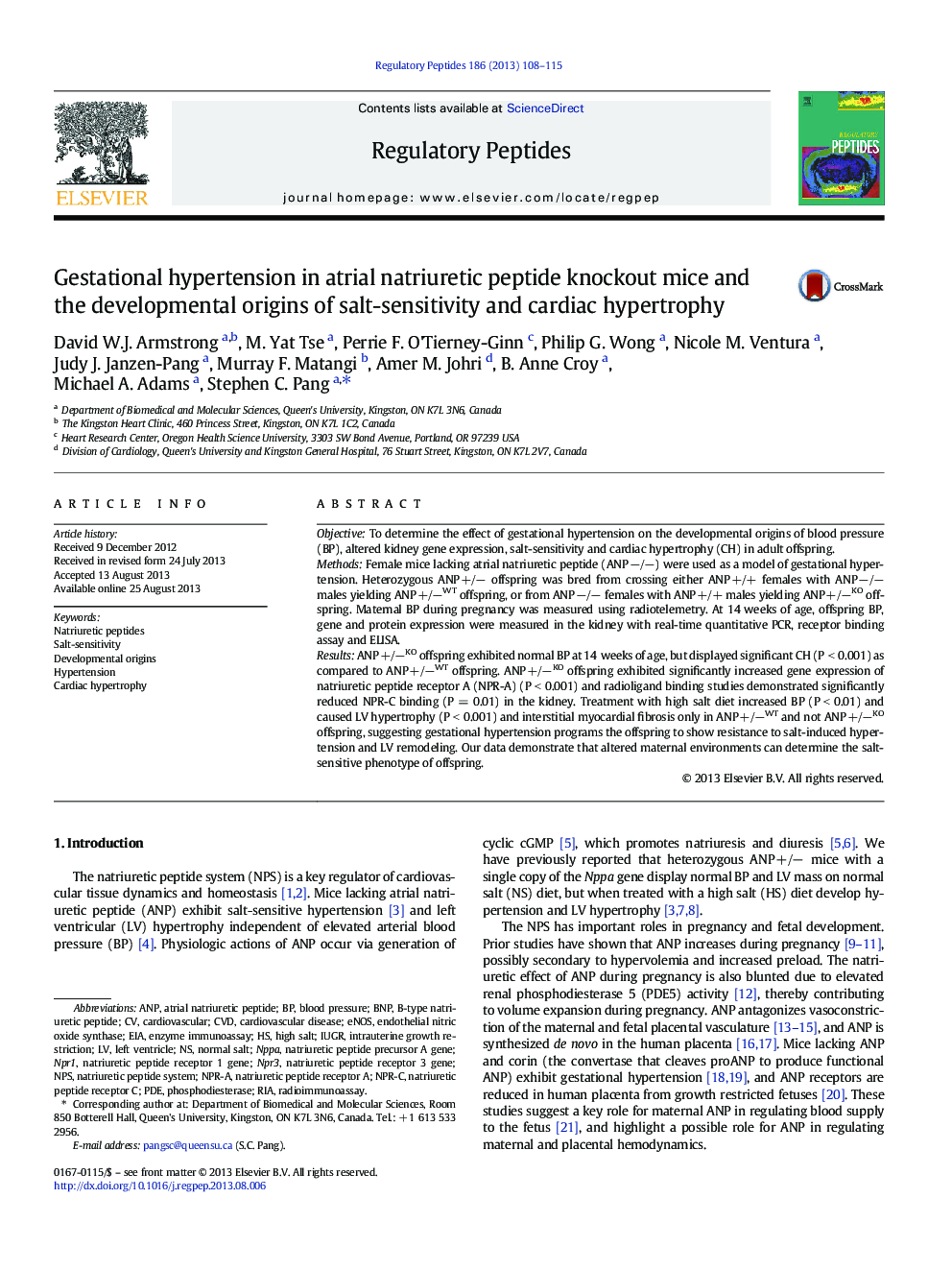| Article ID | Journal | Published Year | Pages | File Type |
|---|---|---|---|---|
| 8361021 | Regulatory Peptides | 2013 | 8 Pages |
Abstract
ANPÂ +/âKO offspring exhibited normal BP at 14Â weeks of age, but displayed significant CH (PÂ <Â 0.001) as compared to ANPÂ +/âWT offspring. ANPÂ +/âKO offspring exhibited significantly increased gene expression of natriuretic peptide receptor A (NPR-A) (PÂ <Â 0.001) and radioligand binding studies demonstrated significantly reduced NPR-C binding (PÂ =Â 0.01) in the kidney. Treatment with high salt diet increased BP (PÂ <Â 0.01) and caused LV hypertrophy (PÂ <Â 0.001) and interstitial myocardial fibrosis only in ANPÂ +/âWT and not ANPÂ +/âKO offspring, suggesting gestational hypertension programs the offspring to show resistance to salt-induced hypertension and LV remodeling. Our data demonstrate that altered maternal environments can determine the salt-sensitive phenotype of offspring.
Keywords
NppaNatriuretic peptide systemNPR3Natriuretic peptide receptor CNPR1IUGRNPR-CNPR-ABNPRIAeNOSANPPDENPsenzyme immunoassayEIAleft ventriclecardiovascular diseaseSalt-sensitivityradioimmunoassayCVDDevelopmental originsendothelial nitric oxide synthasePhosphodiesteraseHypertensionBlood pressurecardiovascularintrauterine growth restrictionHigh saltCardiac hypertrophyatrial natriuretic peptideB-type natriuretic peptidenatriuretic peptidesNatriuretic Peptide Receptor A
Related Topics
Life Sciences
Biochemistry, Genetics and Molecular Biology
Biochemistry
Authors
David W.J. Armstrong, M. Yat Tse, Perrie F. O'Tierney-Ginn, Philip G. Wong, Nicole M. Ventura, Judy J. Janzen-Pang, Murray F. Matangi, Amer M. Johri, B. Anne Croy, Michael A. Adams, Stephen C. Pang,
